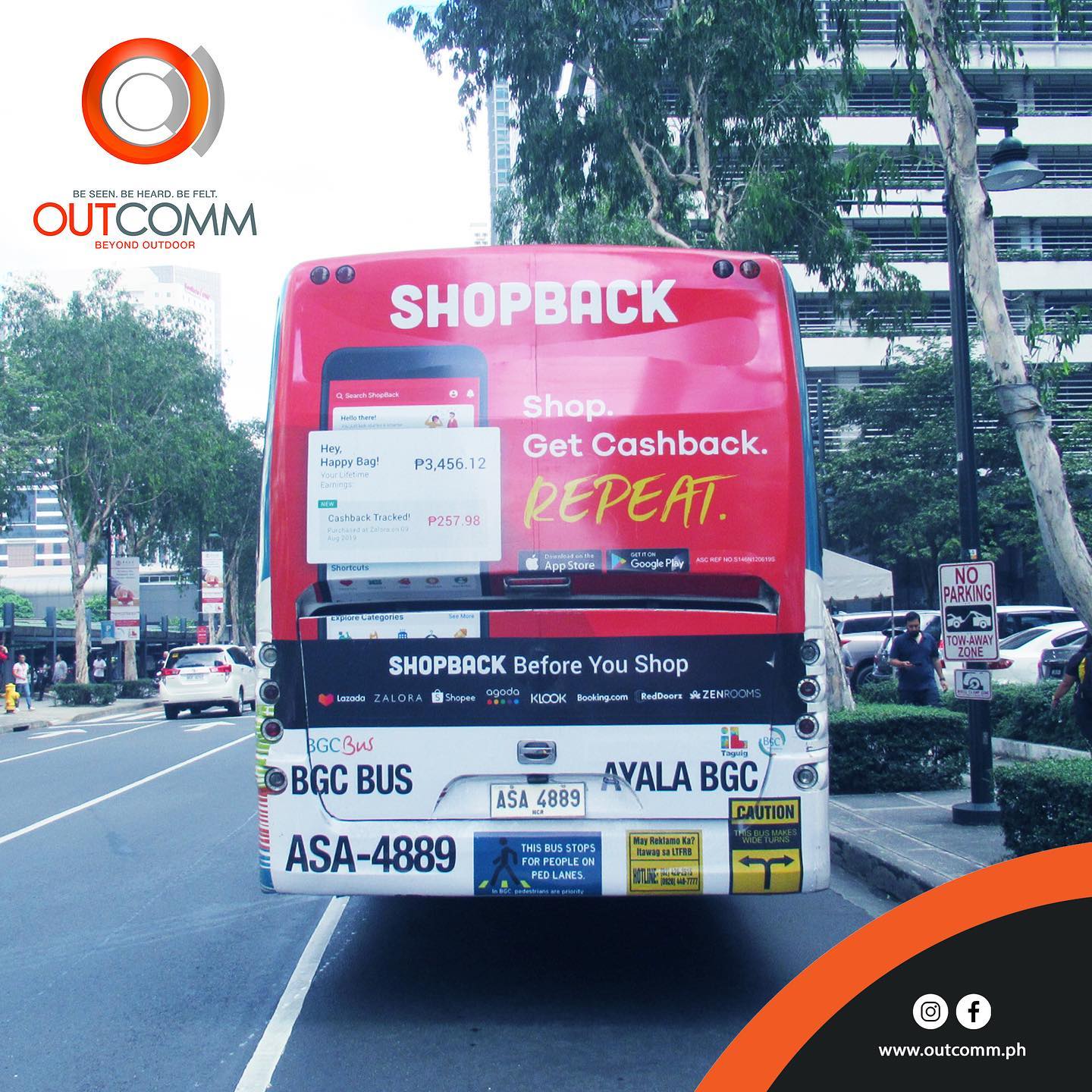Transit Advertising Philippines for Unmatched Brand Name Visibility
Transit Advertising Philippines for Unmatched Brand Name Visibility
Blog Article
Exactly How Transit Advertising And Marketing Can Transform Mass Transit Spaces Into Dynamic Advertising And Marketing Platforms
Transit advertising and marketing holds substantial potential to redefine mass transit rooms into dynamic marketing systems that educate and involve. By using innovative formats such as interactive stands and electronic display screens, brands can not only get to a varied audience but additionally improve the overall traveler experience. This technique develops a special chance for brand names to connect with consumers in a setup that is frequently overlooked. As we discover the diverse benefits and developing approaches of transit advertising, it elevates the inquiry of how this change could redefine our communications with both brands and the urban setting.
Advantages of Transit Advertising

Additionally, transit advertising is very cost-efficient contrasted to conventional media. It enables advertisers to accomplish high perceptions at reduced costs, maximizing roi. The restricted target market of commuters supplies a possibility for brand names to communicate their messages to individuals that are typically responsive throughout their traveling times.
Furthermore, the dynamic nature of transit advertising and marketing allows campaigns to be upgraded regularly, ensuring that messaging continues to be appropriate and prompt. This versatility can be essential in replying to market fads or advertising occasions, maintaining the brand top-of-mind for customers. Lastly, the pervasive presence of transportation advertising and marketing contributes to brand recall; repeated direct exposure within acquainted traveling contexts reinforces brand name recognition and fosters consumer loyalty, inevitably boosting and driving sales brand name online reputation.
Types of Transportation Advertising And Marketing
Public transport systems supply different styles for advertising, each accommodating various advertising approaches and audience involvement approaches. One prominent type is exterior bus and train covers, which cover the entire vehicle and produce a mobile billboard result, allowing for high exposure in city atmospheres. These covers can catch interest as they traverse hectic roads, reaching a varied target market.
An additional preferred style is indoor advertising and marketing, which consists of posters, digital screens, and advertisements on transit seats. These placements involve guests throughout their trip, reinforcing brand name messaging in a restricted space. Digital displays, specifically, provide the benefit of vibrant content, allowing advertisers to update messages in real-time.
Station marketing is additionally considerable, featuring posters, banners, and interactive stands within transit stations. These advertisements utilize foot website traffic and can target particular demographics based on area.
Lastly, advertising collaborations with transportation authorities can result in special campaigns, such as themed transit experiences or occasions, enhancing the total interaction with commuters. Each kind of transportation advertising supplies distinct benefits, allowing brands to customize their method to properly reach their target market within the general public transport environment.
Engaging Travelers Efficiently
Travelers are progressively inundated with advertising and marketing messages throughout their everyday travels, making it crucial for brands to engage them in innovative ways. To record attention in this crowded area, advertisers have to prioritize creativity and importance. Making use of eye-catching visuals and concise messaging can considerably enhance the likelihood of interaction.
Interactive elements, such as QR codes or enhanced reality functions, can additionally transform static advertisements into immersive experiences, cultivating a deeper link with the target market. Brand names should concentrate on resolving travelers' rate of interests and requirements, tailoring messages to reverberate with their way of living, whether with promos for neighborhood organizations or services designed to enhance their commuting experience.
Furthermore, timing plays a critical role; purposefully positioning advertisements during peak commuting hours can make best use of exposure and influence. Engaging commuters properly also entails leveraging social media integration, allowing passengers to share their experiences or promos directly from transportation platforms, thus enhancing brand name reach.
Basically, efficient interaction rests on understanding the commuter trip and creating engaging, interactive, and appropriate advertising and marketing experiences that not only capture focus however additionally drive activity and loyalty. By doing so, brands can change public transport right into a vibrant advertising and marketing platform that reverberates with its audience.

Measuring Marketing Effect
Exactly how can brands precisely evaluate the performance of their marketing campaigns in transportation atmospheres? Measuring the influence of transportation advertising needs a multifaceted strategy that combines quantitative and qualitative metrics. One prevalent approach is tracking engagement with mobile analytics, where brand names can examine foot web traffic patterns and application communications their website previously, during, and after projects.
Studies can supply beneficial insights right into brand recall and customer belief, allowing brands to assess exactly how well their messages reverberate with commuters. Furthermore, checking social networks involvement pertaining to certain campaigns can disclose changes in public assumption and brand name conversation.

Moreover, collaborating with transit agencies can boost measurement precision, as they usually possess comprehensive group data on ridership fads. By incorporating these approaches, brands can develop a detailed understanding of their advertising and marketing effectiveness, making sure that their projects not just get to yet likewise impact their target audiences effectively.
Future Trends in Transit Advertising And Marketing
A considerable change is expected en route marketing as technical innovations and transforming customer habits improve the landscape. Transit Advertising Philippines. The combination of electronic display screens and interactive media is expected to boost interaction, enabling brands to deliver vibrant web content that reverberates with diverse target markets. As public transport systems welcome wise modern technology, advertisers will certainly take advantage of real-time data analytics to customize messages based upon traveler demographics and behaviors
Furthermore, enhanced truth (AR) is positioned to change the means travelers engage with ads. By giving immersive experiences, AR can change a mundane trip into an appealing story that catches interest and fosters brand name loyalty. This development will likely motivate marketers to create more experiential projects that drive consumer interaction.
Sustainability is an additional important fad influencing transit advertising and marketing. As ecological awareness expands, brands will significantly look for to line up with environmentally friendly practices, making use of lasting products and advertising green campaigns within their campaigns.
Verdict
Finally, transportation advertising provides substantial advantages by boosting brand presence and engaging a captive audience. Through various styles, such as exterior covers and digital displays, it changes mass transit into a vibrant advertising and marketing system. Reliable engagement approaches and robust measurement techniques better amplify its influence. As trends progress, Full Article the possibility for innovative interactions in between brands and commuters is poised to expand, making certain that transit advertising and marketing continues to be a crucial component of modern marketing techniques.
Transit advertising holds considerable capacity to redefine public transport areas right into vibrant advertising and marketing systems that engage and notify. The pervasive presence of transportation advertising adds to brand recall; repeated exposure over at this website within acquainted travel contexts enhances brand name understanding and promotes consumer loyalty, inevitably improving and driving sales brand name reputation.
How can brand names precisely analyze the efficiency of their marketing campaigns in transit atmospheres?In final thought, transportation advertising provides substantial advantages by improving brand name exposure and involving a restricted audience. Transit Advertising Philippines. As fads advance, the potential for cutting-edge interactions between brand names and travelers is positioned to grow, guaranteeing that transportation advertising stays an important element of modern marketing approaches
Report this page